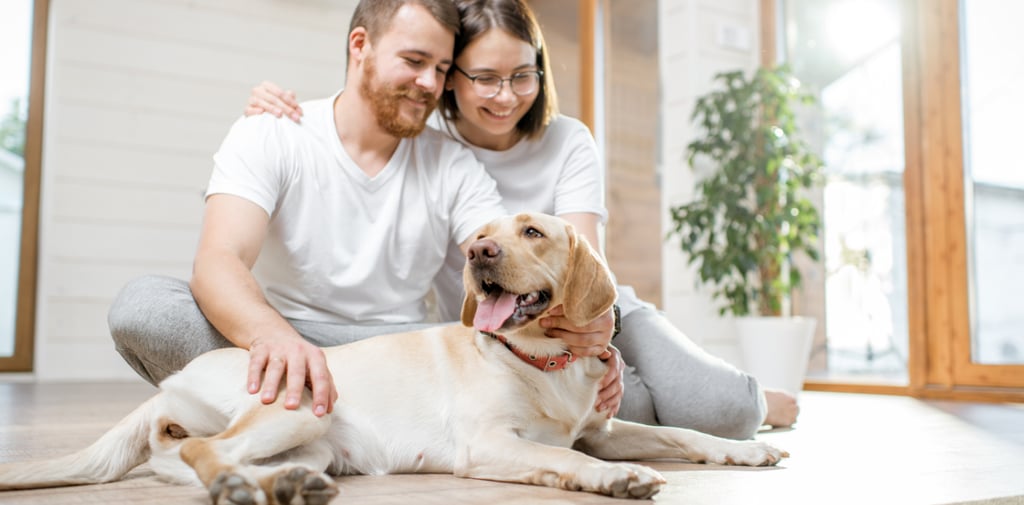Building a lasting bond with your pet: expert tips for a happy and healthy companion
Discover practical tips to strengthen your bond with your pet. Learn how to ensure their health, happiness, and well-being while creating a lifelong connection.
7/25/20254 min read


Building a deep, lasting connection with your pet is one of the most rewarding experiences in life. It goes far beyond feeding, walking, or sheltering — it’s about forging a bond built on trust, respect, and genuine affection that transcends words.
Your pet isn’t just an animal — they’re a true member of your family. Investing time, energy, and emotion into this relationship creates an endless source of love, companionship, and joy for many years to come. Though it takes patience, understanding, and consistency, the rewards far outweigh any effort.
1. Understanding your pet’s fundamental needs
The first step in building a strong relationship with your pet is understanding who they truly are — and what they need to thrive.
Every animal — whether a playful dog, an independent cat, or even a small companion like a bird or hamster — has its own set of instincts, behaviors, and preferences. Recognizing and meeting these needs lays the foundation for a strong, harmonious bond.
Know your pet’s species and personality
Understanding your pet’s natural instincts and tendencies is like having a personalized guidebook for their care.
Dogs:
Different breeds have different energy levels and temperaments. A Border Collie needs mental and physical stimulation daily, while a French Bulldog prefers a slower pace. Recognizing whether your dog is a working breed, a companion, or a hunting type will help you design the right routine, exercise, and training approach.Cats:
Cats are natural hunters who love to climb, hide, and observe their environment. Offer vertical spaces, scratching posts, and interactive play sessions to satisfy their instincts. Enriched environments make cats happier, calmer, and more affectionate.
When you understand your pet’s nature — their energy, temperament, and social preferences — you’ll naturally respond better to their needs, deepening the trust and love between you.
2. Prioritize health and well-being
A healthy pet is a happy pet — and health is the cornerstone of a lasting relationship.
A pet who feels good physically is far more open to connection, affection, and learning.
Regular veterinary care
Schedule routine checkups, vaccinations, and preventive care. Your vet is your best ally in maintaining your pet’s long-term health and spotting issues before they become serious.
Balanced nutrition
Choose high-quality food suited to your pet’s age, size, and activity level. Avoid feeding human foods that could be harmful. Proper nutrition enhances energy, coat quality, digestion, and longevity.
Safe and enriched environment
Your home should be a safe and stimulating space. Remove toxic plants, sharp objects, or cleaning chemicals. Offer toys, cozy resting areas, and — for cats — climbing and hiding spots.
An enriched environment keeps pets mentally active and reduces destructive or anxious behaviors.
Hygiene and comfort
Regular grooming, nail trimming, dental care, and baths (when appropriate) keep your pet comfortable and healthy. A clean, well-cared-for pet feels better and is more eager to engage with you.
3. Communication: the silent language of love
One of the most beautiful aspects of sharing life with an animal is learning to “speak” their language. While pets don’t use words, they communicate through body language, vocalizations, and behavior — and understanding these cues is key to emotional connection.
Reading body language
Dogs:
A wagging tail doesn’t always mean happiness — it can also indicate anxiety or uncertainty. Ears pinned back might show fear or submission, while relaxed posture and soft eyes reflect trust.Cats:
A cat’s slow blink is a powerful sign of affection. A tail held high signals confidence, while rubbing against you means you’re part of their “safe zone.” Flattened ears or hissing, on the other hand, show stress or discomfort.
Listening to sounds and behavior
Dogs:
Barking can express excitement, warning, or boredom. Whining may indicate stress or a request for attention.Cats:
Purring often means contentment, but can also serve as self-soothing. Changes in appetite, hiding behavior, or sleeping patterns can signal health or emotional issues.
By observing and responding appropriately to your pet’s cues, you build mutual trust — and your pet learns that you truly understand them.
4. Positive training: the foundation of mutual trust
Training isn’t just about obedience — it’s about communication, respect, and teamwork.
Positive reinforcement helps create a cooperative relationship rooted in love rather than fear.
Reward good behavior: Offer treats, praise, or affection whenever your pet does something right.
Be patient and consistent: Learning takes time. Use short, regular training sessions and stay calm.
Avoid punishment: Physical or harsh corrections damage trust and can lead to anxiety or aggression.
If needed, seek help from a professional trainer who uses reward-based methods. Training together strengthens your bond and helps both of you communicate more clearly.
5. Quality time: the heart of every relationship
True connection is built in the everyday moments — through shared routines, playtime, and calm presence. Consistency and attention matter more than grand gestures.
Play and exercise
For dogs: Walks, fetch, agility, or swimming keep them fit and mentally stimulated.
For cats: Short play sessions that mimic hunting — chasing feathers or small toys — are ideal.
Join the fun! Play with your pet instead of just providing toys. Shared joy creates positive associations and emotional closeness.
Affection and presence
Petting, gentle massages, and calm time together all strengthen your bond. Many pets crave touch and reassurance — it’s their way of connecting.
Speak softly, use their name often, and be present. Turn off distractions and focus entirely on your pet for a few minutes a day. That mindful attention is priceless.
6. Facing challenges together
Every relationship faces ups and downs. Behavior issues, illness, or life changes can test your patience — but how you respond defines the strength of your bond.
Understanding behavior issues
When a pet misbehaves, try to find the “why.” Many problems stem from stress, boredom, fear, or medical causes. Avoid shouting or punishment — it only increases fear. Instead, use positive reinforcement and seek professional guidance from trainers or behaviorists when needed.
Consistency, patience, and empathy transform challenges into opportunities to grow closer.
7. The power of love and patience
Love and patience are the invisible threads that hold every lasting relationship together.
Your pet offers unconditional love — the kind that doesn’t judge, hold grudges, or expect perfection.
Return that love daily through small acts of care: regular walks, cozy cuddles, gentle words. Be patient as they age, as their needs change, and as life shifts. Whether your pet is a lively puppy or a wise senior, each stage is an opportunity to show gratitude and devotion.
A lifelong connection: the legacy of unconditional love
Creating a lifelong bond with your pet is more than a goal — it’s a beautiful journey.
Through shared experiences, challenges, and simple everyday joy, you and your pet build something extraordinary: a partnership based on trust, compassion, and love that lasts a lifetime.
Each moment — from playtime to quiet cuddles — weaves a story of loyalty and affection that neither of you will ever forget.
Cherish it. Nurture it. And know that in loving your pet deeply, you’ve created one of life’s purest and most enduring connections.
Health
Tips for a healthy and balanced life.
© 2025. All rights reserved.
Well-being
Privacy Policy
Terms and conditions
